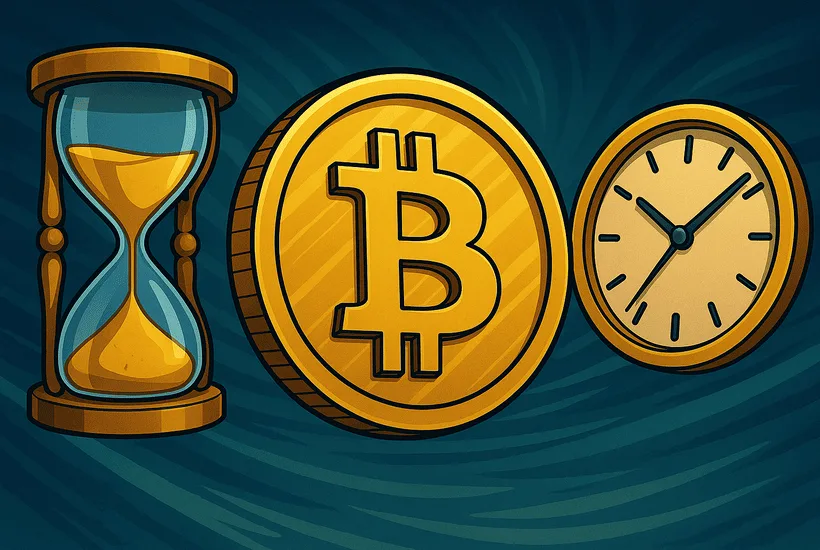- BTC halving was coded by its anonymous founder Satoshi Nakamoto to maintain its scarcity
- Halving occurs roughly every four years
- The 32nd and last halving event for BTC is slated for the year 2140
Bitcoin, the world’s oldest cryptocurrency, undergoes a process called “halving” roughly every four years. This process was pre-programmed by BTC creator Satoshi Nakamoto to slow down the addition of new BTC tokens, controlling inflation and maintaining the token’s scarcity in the market. The last BTC halving event occurred in April 2024, which implies that the next one would happen in 2028.
To understand the profound impacts that Bitcoin halving has on the token’s ecosystem, CoinHeadlines consulted market analysts on the potential consequences of an accelerated or delayed halving timeline for Bitcoin.
What could happen if halving timeline was to be reduced
Bitcoin’s total supply is capped at 21 million tokens, and since its development in 2009, over 19 million have entered circulation. Data by CoinMarketCap shows that 19.89 million Bitcoin tokens – making for 94 percent of the total available tokens – are presently in circulation. The halving of Bitcoin is initiated automatically after every 210,000 blocks are mined on the Bitcoin blockchain.
Newsletter
Get weekly updates on the newest crypto stories, case studies and tips right in your mailbox.
“Lets assume that halving is done every two years – the supply of Bitcoin in the market would be accelerated, but it would not change the supply considerably, ” Aravind Chandrasekaran, the founder and CEO of Bengaluru-based Blend Invest told CoinHeadlines.
In three hypothetical situations – he said – if the halving is reduced to two years, more BTC would enter the circulation leading to an increase of 1.2 BTC in total supply. Meanwhile, at the current four-year halving timeline, 0.8 BTC are estimated to be infused into the total supply.
“94 percent of Bitcoin supply or ~20 million BTC tokens are already out in the market. Making the halving cycle every two years depending on how we do it — will only marginally increase the Bitcoin supply. Price action will largely be determined by demand for Bitcoins which in turn will depend on the educational and marketing activities that could help people understand the value of BTC,” Chandrasekaran added.
In terms of the ecosystem’s security, however, cutting the halving time will have unintended consequences on network security, Chandrasekaran said. These impacts would include a reduction in the incentives for BTC miners which may trigger an exodus and a decrease in the overall hashrate that would make the network a focus point for cyberattackers.
What if the halving timeline was stretched to eight years?
A major impact of increasing the timeline of BTC halving by eight years would show in its prices.
Explaining the situation, Ganesh Mahidar, a senior investment analyst at Abu Dhabi-based Further Ventures said that doubling the Bitcoin halving time from the current four years to eight years would significantly decrease the rate at which new BTC enters the economy. This could result in only approximately 0.6 BTC entering the total supply over the given period.
“If halving happens every eight years, the price of BTC would not increase as much as more supply is available,” Mahidar told CoinHeadlines. Overall, this could potentially bring more stability to Bitcoin’s pricing reducing the element of volatility.
Mahidar explained that any alteration to Bitcoin’s halving schedule would require major changes or upgrades to the underlying rules (protocol) of the blockchain.
“To change the halving, one may need to get 99 percent of the node operators to vote for this proposal- which is very hard,” he said, implying that the possibility of this happening is next to nil for the time being.
More on halving
Bitcoin was created in 2009 and its first halving process occurred in 2012. With each halving, the incentive of BTC miners also gets cut down. In 2012, BTC halving had brought the reward for BTC miners from 50 BTC to 25 BTC.
As per BitPanda’s data tracker, last year’s BTC halving reduced these rewards from 6.25 to 3.125 BTC per block. With BTC presently trading at $122,100 – 3.125 BTC amounts to $381,375 – which is what miners are earning for mining a new block on the blockchain. The next halving will reduce the block reward further to 1.562 BTC.
In total, the Bitcoin halving event is only slated to occur 32 times, as coded by Satoshi Nakamoto. So far, the event has happened in 2012, 2016, 2020, and 2024. The last one, in this sequence, would occur in the year 2140 after which no more new BTC tokens will be created.













